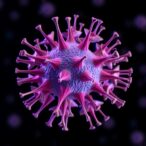As other pharmas drop next-gen obesity assets, Eli Lilly’s experimental oral GLP-1 has prompted weight loss up to an average of 27.3 pounds in the first of two pivotal trials, queuing up plans for a regulatory submission before the end of this year.
The results come from Attain-1, a phase 3 study that took place across multiple countries and recruited adults with obesity or who were overweight and had at least one weight-related comorbidity, such as high blood pressure or cardiovascular disease. Individuals with diabetes were not included in the study.
The 3,127 trial participants were randomized to receive either 6 mg, 12 mg or 36 mg of GLP-1 receptor agonist orforglipron or placebo. All participants in the orforglipron groups started with a daily 1-mg dose, with the amount increasing at four-week intervals until reaching the final randomized maintenance dose.
Individuals in the trial didn’t have any food or water restrictions.
Attain-1 met its main goal, with the highest dose of orforglipron taken once every day tied to 12.4% (27.3 pounds) weight loss at 72 weeks.
The other two dosing groups also hit the primary endpoint, with participants receiving 12 mg experiencing a mean weight loss of 9.3% (20.7 pounds) and those in the 6-mg group experiencing 7.8% (17.6 pounds) mean weight loss.
This is compared to 0.9% (2.2 lbs) weight loss for the placebo group.
Related
Lilly highlighted certain secondary endpoint wins as well, such as percentage of body weight lost. For patients in the highest dose group, 59.6% lost at least 10% of their body weight, while 39.6% dropped at least 15%.
In a pooled analyses, all three doses of orforglipron reduced known markers of cardiovascular risk, like non-HDL cholesterol, triglycerides and systolic blood pressure, according to Lilly.
In a prespecified exploratory analysis, the 36-mg investigational dose led to a 47.7% reduction in high-sensitivity C-reactive protein levels, which is a marker of inflammation associated with a higher risk of heart problems.
On the safety side, orforglipron had an overall profile consistent with that of the already established GLP-1 receptor agonist class, with the most common adverse events (AEs) being gastrointestinal-related.
Discontinuation rates due to AEs were 5.1% in the low dose group, 7.7% for the middle cohort and 10.3% for the high dose arm, compared to 2.6% for placebo.
Overall treatment discontinuation rates were 21.9%, 22.5% and 24.4%, respectively—all lower than the 29.9% of participants that discontinued on placebo.
No liver safety signals were observed.
Lilly expects to share more detailed findings from the trial next month at the 2025 European Association for the Study of Diabetes Annual Meeting as well as in an unnamed peer-reviewed journal.
Related
With these results in hand, the obesity drug maker is headed toward regulators, angling to submit approval applications to global agencies by the end of 2025. The company is investing substantially in hopes of meeting anticipated demand, according to the release.
“With orforglipron, we’re working to transform obesity care by introducing a potential once-daily oral therapy that could support early intervention and long-term disease management, while offering a convenient alternative to injectable treatments,” Kenneth Custer, Ph.D., executive vice president and president of Lilly cardiometabolic health, said in an Aug. 7 release.
More results from Lilly’s Attain program, which has enrolled more than 4,500 people with obesity or who are overweight across two global registration trials, are expected later this year.
The two studies are part of Lilly’s larger phase 3 program, called Achieve, a seven-trial program studying orforglipron across people with diabetes and obesity. The candidate was discovered by Chugai Pharmaceutical, with Lilly licensing the rights for $50 million back in 2018.
In May, the company shared phase 3 data on orforglipron in people with Type 2 diabetes. After 40 weeks of once-daily dosing, A1C, a measure of blood sugar, was between 1.3% and 1.6% in orforglipron cohorts, compared to a 0.1% drop in the placebo group. The result caused the trial to meet its primary endpoint.
Related
The new phase 3 findings are down from Lilly’s earlier orforglipron study that demonstrated a 14.7% weight loss at 36 weeks. The 12.4% weight loss is also significantly lower than Lilly’s own Zepbound (tirzepatide), an injectable GLP-1.
In that open-label phase 3b dubbed Surmount-5, patients taking tirzepatide achieved an average weight reduction of 20.2% compared with 13.7% with Novo Nordisk’s rival med Wegovy (semaglutide) at 72 weeks. The patients were obese or overweight with at least one weight-related medical problem and without diabetes.
And in Novo’s recent 3b STEP UP study, an experimental 7.2-mg semaglutide dose helped patients lose more weight on average at 72 weeks compared to placebo or semaglutide 2.4 mg, which is currently the highest dose of the drug marketed under the Wegovy brand for obesity.
Those who received once-weekly semaglutide 7.2 mg lost 20.7% of their body weight on average after 72 weeks versus 17.5% weight loss with semaglutide 2.4 mg and just 2.4% weight loss in the trial’s placebo arm.
Further, 33.2% of patients on the highest semaglutide dose achieved weight loss of at least 25% after the 72-week mark, versus 16.7% of patients on semaglutide 2.4 mg and 0% of patients on placebo who hit that magnitude of success.
While Zepbound and Wegovy are injectable drugs and not oral, as orforglipron is, that ease of administration may not be as compelling if the drug’s efficacy remains significantly lower than its rivals.
This may go some way to explain investors’ initial reaction Thursday morning, which saw Lilly’s shares down a hefty 13% in relation to the data in premarket trading, coming ahead of its earning results.
Novo has however dropped two obesity candidates—a midstage GLP-1/GIP co-agonist and a clinical CB1 receptor—as obesity sales disappointed in the second quarter.
The pipeline changes followed another Novo termination one year earlier of a once-monthly dual GLP-1/GIP receptor agonist. At the time, a Novo executive stressed that the phase 1 study of the candidate had only ever been “exploratory.”
What’s more, the Danish drugmaker missed the goal in two phase 3 studies for CagriSema, an investigational combination of amylin analog cagrilintide and GLP-1 drug semaglutide.
Lilly is also racing ahead of Big Pharma Pfizer after the company discarded its third and final GLP-1 agonist earlier this week, citing poor data and tough competition.



